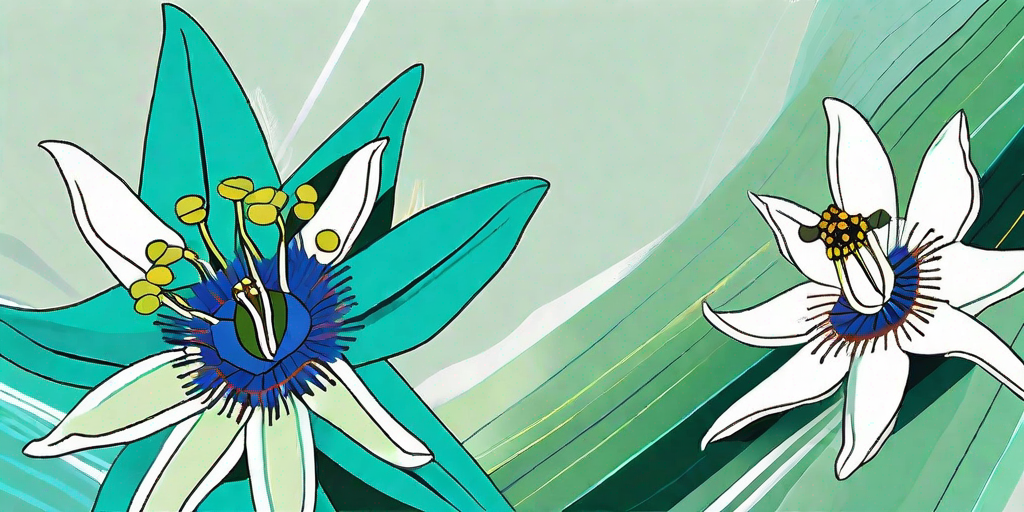
In the world of botany, there's a battle brewing. A battle so intense, it could only be compared to the likes of Godzilla vs. King Kong, Batman vs. Superman, or perhaps even the age-old debate of pineapple on pizza. Yes, we're talking about the clash of the Passifloras: Caerulea vs Incarnata. These two titans of the plant world are going head-to-head, and we're here to dissect every petal, leaf, and tendril to determine which one truly reigns supreme.
The Contenders
Before we dive into the nitty-gritty details of this botanical brawl, let's take a moment to introduce our contenders. In the blue corner, we have Passiflora Caerulea, also known as the Blue Passionflower. This South American native is renowned for its striking blue and white flowers and its love for a good sunbathe.
In the purple corner, we have Passiflora Incarnata, or the Maypop. Hailing from the Southeastern United States, this plant is known for its beautiful purple flowers and its ability to withstand cooler temperatures. But don't let its delicate appearance fool you, this plant is as tough as they come.
Round 1: Aesthetics
Passiflora Caerulea
When it comes to looks, the Blue Passionflower is no wallflower. Its flowers are a stunning mix of blue and white, with a unique crown-like structure in the center that gives it an almost alien appearance. The leaves are dark green and glossy, providing a beautiful contrast to the bright flowers.
But the beauty of the Caerulea isn't just skin deep. This plant also produces orange-yellow fruits that, while not the tastiest, add an extra pop of color to your garden.
Passiflora Incarnata
The Maypop, on the other hand, is all about the purple. Its flowers are a beautiful shade of lavender, with a complex center that looks like it was designed by a master architect. The leaves are three-lobed and have a slightly fuzzy texture, which adds an extra layer of interest.
And let's not forget about the fruit. The Maypop produces large, egg-shaped fruits that are a bright yellow when ripe. Not only are they visually appealing, but they're also edible and have a sweet, tropical flavor.
Round 2: Hardiness
Passiflora Caerulea
The Blue Passionflower is a sun-loving plant that thrives in warm, tropical climates. It's not a fan of frost, and will quickly turn up its leaves at the first sign of cold weather. However, it's relatively drought-tolerant and can handle a bit of neglect, making it a good choice for those of us who are a bit forgetful when it comes to watering.
Passiflora Incarnata
The Maypop, in contrast, is a bit of a tough cookie. It can handle cooler temperatures and can even survive a light frost. It's also drought-tolerant and isn't too picky about soil conditions, making it a versatile choice for a variety of garden settings.
Round 3: Maintenance
Passiflora Caerulea
While the Blue Passionflower is relatively low-maintenance, it does have a few requirements. It needs a sunny spot in the garden and well-drained soil. It's also a vigorous climber, so it will need something to climb on. And while it's drought-tolerant, it does appreciate a good drink during dry periods.
Passiflora Incarnata
The Maypop is also a low-maintenance plant, but it's a bit more flexible when it comes to its growing conditions. It can handle both sun and partial shade, and isn't too fussy about soil type. Like the Caerulea, it's a vigorous climber and will need support. It's also a fast grower, so be prepared to do some pruning to keep it in check.
FAQs
- Can I grow these plants indoors?
Yes, both the Blue Passionflower and the Maypop can be grown indoors, provided they get enough light and have something to climb on.
- Are these plants pet-friendly?
While these plants are not toxic, they can cause mild gastrointestinal upset if ingested by pets. It's best to keep them out of reach of curious fur babies.
- Can I grow these plants from seed?
Yes, both plants can be grown from seed. However, they can take a while to germinate, so be prepared for a bit of a wait.
The Verdict
So, who wins the battle of the Passifloras? Well, like most things in life, it depends. If you're after a plant with striking, out-of-this-world flowers and don't mind a bit of extra care, then the Blue Passionflower might be the one for you. But if you're looking for a hardy, low-maintenance plant that still packs a visual punch, then the Maypop could be your champion.
But why choose? In the end, both these plants have their own unique charms and would make a wonderful addition to any garden. So why not throw caution to the wind and get both? After all, in the battle of the Passifloras, the real winner is you.















